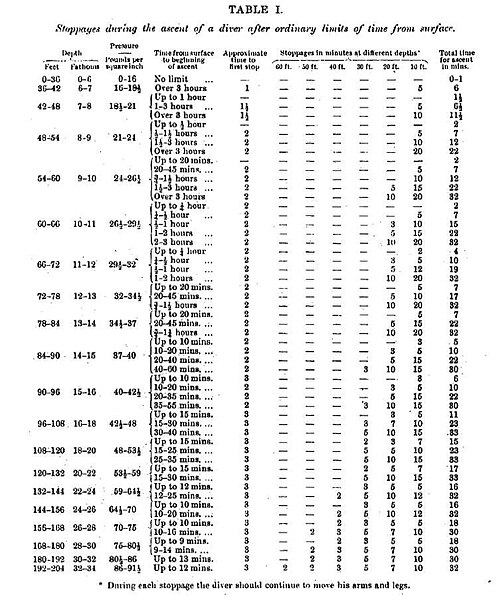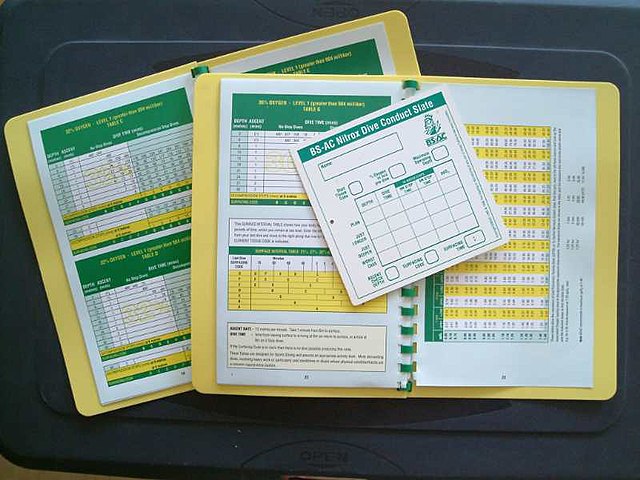Haldane's decompression model
Haldane's decompression model is a mathematical model for decompression to sea level atmospheric pressure of divers breathing compressed air at ambient pressure that was proposed in 1908 by the Scottish physiologist, John Scott Haldane, who was also famous for intrepid self-experimentation.
John Scott Haldane in 1902
Decompression table-I in ft and psi. "Stoppages during the ascent of a diver after ordinary limits of time from surface."
Decompression table-II in ft and psi. "Stoppages during the ascent of a diver after delay beyond the ordinary limits of time from surface."
Paul Bert.
The decompression of a diver is the reduction in ambient pressure experienced during ascent from depth. It is also the process of elimination of dissolved inert gases from the diver's body which accumulate during ascent, largely during pauses in the ascent known as decompression stops, and after surfacing, until the gas concentrations reach equilibrium. Divers breathing gas at ambient pressure need to ascend at a rate determined by their exposure to pressure and the breathing gas in use. A diver who only breathes gas at atmospheric pressure when free-diving or snorkelling will not usually need to decompress. Divers using an atmospheric diving suit do not need to decompress as they are never exposed to high ambient pressure.
Divers decompressing in the water at the end of a dive
Basic deck decompression chamber
Recreational decompression tables printed on plastic cards
Divers using the anchor cable as an aid to depth control during a decompression stop








